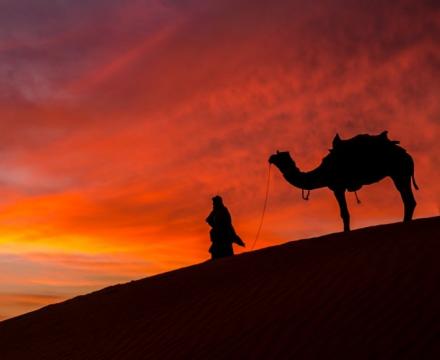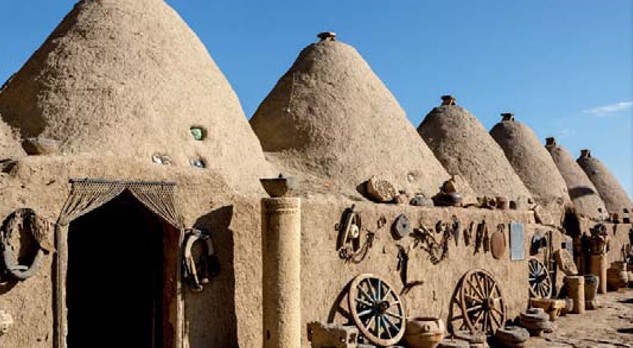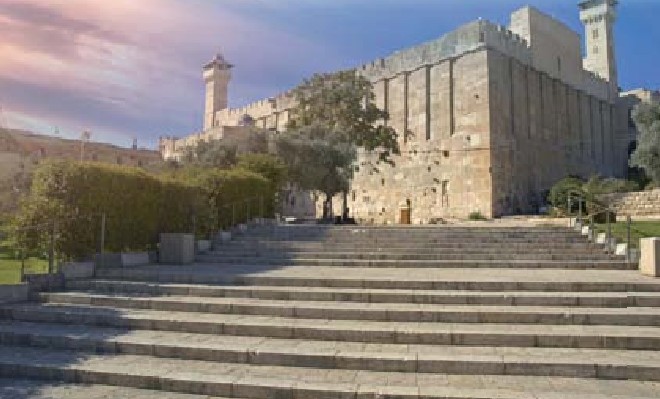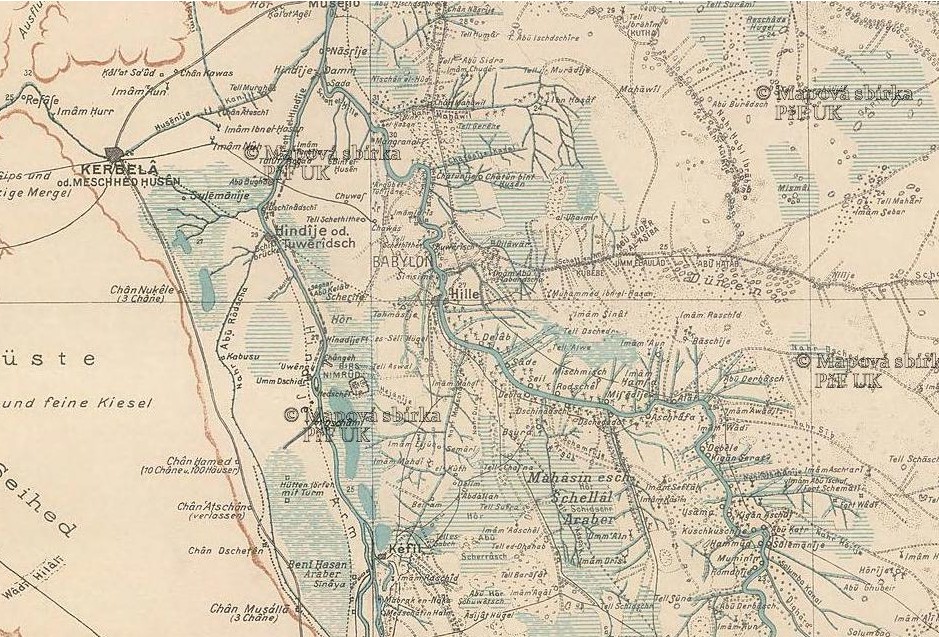Following the Legacy of Abraham the Hebrew
The thrill of discovering archaeological proof of biblical stories never gets old. Here's a glimpse into Rabbi Zamir Cohen's new book about biblical archaeology.

"The amount of details confirmed by recent discoveries is so vast that most expert researchers have distanced themselves from the old biblical criticism theory, which claimed that the stories of the patriarchs were mere projections...".
William Foxwell Albright, a leading scholar of biblical archaeology
The Torah tells us that not long after the flood, humanity was once again lost in idolatry, until a man emerged to change the world forever: Abraham the Hebrew.
Maimonides describes it like this:
"The world continued in its habitual course, living without thought and in idolatry, until the pillar of the world was born - Abraham our father. When Abraham was still young, he began to wonder by himself, contemplating day and night. He was amazed at how the universe constantly runs without having someone to manage it. He had no teacher and no one to inform him; instead, he lived in Ur-Kasdim among foolish idol worshipers. Yet his heart wandered and understood, leading him to the path of truth...".
How did he find this path of truth? The sages point out in the Midrash that his relentless, solitary search in a world of opposition led to a divine revelation. Here's what they say:
"A parable: A traveler saw a palace ablaze with lights and said, 'Could it be that this magnificent palace is ownerless?' The master of the palace peered out and said, 'I am the owner of the palace.' Similarly, our father Abraham wondered, 'Is it possible that this world is without a leader?' Hashem revealed Himself to him and said, 'I am the Master of the world.'"
Thus, due to his constant search for the Creator, Hashem revealed Himself and accompanied Abraham throughout his life.
* * *
Abraham was the tenth generation after Noah. His father was Terach, son of Nahor, and the Torah records the names of his ancestors: Nahor son of Serug, son of Reu, son of Peleg, son of Eber, son of Shelah, son of Arpachshad, son of Shem, who was Noah's son.
Near the mid-20th century, the research world was shaken by discoveries that shed new light on the existence of these individuals, especially Abraham our forefather.
In 1933, while excavating a tomb at Tel Hariri by the Euphrates River in Syria, an ancient stone statue was found that impressed all who saw it and hinted that more artifacts might be hidden nearby. Following this discovery, a French expedition led by archaeologist Professor André Parrot began excavations. Among the finds was a small figure with an inscription in cuneiform on its right shoulder. Professor Parrot quickly translated it: "I am I-Lam-Agi-Mari of Mari the Great... dedicate... monument..."
 (Shutterstock image)
(Shutterstock image)Until then, the city of 'Mari' was known only from Babylonian and Assyrian inscriptions, one of which noted it as the tenth city rebuilt "after the flood"(!). This was the first time a find from the city itself was discovered! The excitement was palpable, yet no one anticipated what else would be revealed.
Years of extensive work uncovered the large city of 'Mari', centered around a magnificent palace with 260 rooms and courtyards. Colorful mural paintings adorned the palace walls, and inside were no fewer than 23,600 tablets(!), inscribed with royal decrees, writings of local governors, accounts, and other records of the realm.
Among these writings were names familiar from the Bible: 'Terach', 'Nahor', 'Peleg', and'Serug'. Also found was the city of 'Haran', mentioned in the Torah as the place where Abraham’s family lived!
Archaeologists believe the Mari kingdom existed 4,000 years ago until it was destroyed by the famous Babylonian king Hammurabi in 1700 BCE.
Abraham was born in the Jewish year 1948, which is 1812 BCE. The timeline matches perfectly.
A Lonely Believer in One God
The sages report that Abraham lived in his youth surrounded by idol worshippers, yet he came to believe in one God. He despised the idols his father sold and smashed them. As a result, he was thrown into a furnace by the heretical king Nimrod but survived miraculously, as told in the Midrash and detailed by Maimonides:
"At 40, Abraham recognized his Creator. Once he came to know and understand, he began answering the sons of Ur-Kasdim, confronting them in discussion, proclaiming that their path was not the truth, and shattered their idols. He began informing people that only the God of the universe was worthy of worship... Once he bested them in argument, the king sought to kill him, and a miracle occurred allowing him to escape to Haran...".
The Torah states that Abraham lived in a region called "Aram Naharayim", meaning "Aram between the rivers", due to its location between the Euphrates and Tigris Rivers. Researchers speculate that the exact area called Aram was located in northwestern Iraq and northern Syria near the Turkey border. When Abraham ordered his servant Eliezer, to go "to my land and to my birthplace and take a wife for Isaac," the servant made his way "to Aram Naharayim to the city of Nahor". Interestingly, a city named Nahor appeared in the records unearthed at Mari, known as the city of 'Nahr'.
 A building in Kutha, attributed to Abraham our father. From archaeologist A. G. Banks' book, 1912
A building in Kutha, attributed to Abraham our father. From archaeologist A. G. Banks' book, 1912Regarding the cities where Abraham lived in his youth, the Talmudic sages reveal important information: "Abraham our father was imprisoned for ten years, three in Kutha and seven in Kardu... Ibra Zeira of Kutha (a tiny settlement next to the city of Kutha, like the embryo of a pregnant woman) is Ur-Kasdim". Maimonides also notes, based on ancient writings, that "Abraham grew up in Kutha...".
The sages hence claim that there was a settlement named Kutha, where Abraham lived in his youth, and adjacent to it was a small village called Ur-Kasdim. "Ur" is derived from "fire", named for the furnace operating there. The city of Kutha is also mentioned in the Bible as one of the cities from which the Assyrian king deported locals to Israel: "The king of Assyria brought people from Babylon, Cutha...", these people are known as Samaritans.
Remarkably, a settlement named Kutha, which locals called "Tel Ibrahim", is still identified in central Iraq today! A nearby large water channel is still named "The Prophet Ibrahim's River". The ruins were excavated in the 19th century by archaeologists including Hormuzd Rassam—a fascinating Assyrian-Syrian researcher—and among his finds were tablets bearing the Gilgamesh epic and Cyrus' declaration. Rassam reported sites at Kutha bearing Abraham's name.
Haran
"And Terach took Avram his son... and Sarai his daughter-in-law, Avram's wife, and they exited with them from Ur-Kasdim to go to the land of Canaan and they arrived till Haran and dwelt there."
The city of Haran, where Terach and Abraham settled after leaving Ur-Kasdim, is situated 448 kilometers northeast of Damascus. Over the past century, the authenticity of the biblical account of Terach's migration from Ur to Haran has been widely accepted by scholars, recognizing there's "no basis to doubt the historicity of the account of Terach and his family's migration from Ur to Haran".
 Mudbrick houses in the ancient city of Haran
Mudbrick houses in the ancient city of Haran Our sages in the Midrash describe the spiritual work of Abraham and Sarah in Haran:
"'And the souls that they made in Haran'... Rabbi Huna said: Abraham converted the men and Sarah converted the women... 'And he called in Hashem's name', teaching that he proclaimed Hashem's name to everyone. Alternatively, 'he called', he began converting converts and bringing them under the wings of the Divine Presence".
Maimonides elaborates on how Abraham taught the locals about belief in one God:
"...Abraham recognized his Creator... and started announcing to the people that it's inappropriate to worship anything but the God of the world... When he overcame them with his arguments, the king sought to kill him and a miracle allowed him to escape to Haran, and he started standing up and shouting loudly to all the world, declaring that there's one God for the whole world and that He alone should be worshiped. He would go around gathering people city by city and kingdom to kingdom, until he reached the land of Canaan, and he proclaimed... and made known to every individual according to their understanding until he returned them to the path of truth...".
 The structure built above the Tomb of the Patriarchs, where Adam and Eve, Abraham and Sarah, Isaac and Rebecca, Jacob and Leah are buried
The structure built above the Tomb of the Patriarchs, where Adam and Eve, Abraham and Sarah, Isaac and Rebecca, Jacob and Leah are buriedIt's noteworthy that tablets discovered in the ancient city of 'Ebla', located south of Haran on the route to Israel, which existed during Abraham's time, speak of sacred folks called "Nabayotum" ("prophets"?), wandering from place to place, city to city, and teaching new faith to the inhabitants.
Do we hear in this ancient tale an echo of the work of Abraham and Sarah?
Where is "Ur-Kasdim"?
From the Torah, it appears that in his younger years, Abraham also stayed in a place called "Ur-Kasdim", as it says:
"And Terach took Abram his son and Lot the son of Haran, his grandson, and Sarai his daughter-in-law, the wife of Abram, and they departed with them from Ur-Kasdim to go to the land of Canaan, and they arrived in Haran and settled there". And it is also said: "And He said to him, I am Hashem who brought you out of Ur-Kasdim".
Seemingly, the name consists of two words: "Ur", inhabited later by the "Kasdim". Why called "Ur" which means "fire"? For the cruel practice in place, to throw into a fiery furnace anyone who did not act as the ruler desired. As Rashi comments in his Torah interpretation based on the Midrash on the verse "And Haran died in the presence of his father Terach": "He died by his father's hands, as Terach informed on his son Abram to Nimrod for smashing his idols, and they cast him into the furnace and Haran sat and thought in his heart: If Abram is victorious, I'm with him, and if Nimrod is victorious, I'm with him. When Abram was saved, they said to Haran: Of whom are you a follower? He said to them: Of Abram! They threw him into the furnace and he burned, and that's Ur-Kasdim".
 Archaeologist Hormuzd Rassam, who dug in Kutha
Archaeologist Hormuzd Rassam, who dug in KuthaSome scholars believe that the ancient city 'Ur', found in southern Iraq, is where Abraham lived during his childhood. Meanwhile, Muslim sources claim that it's the city of 'Urfa' in eastern Turkey near Haran that is the biblical Ur.
However, the Ramban clearly explains: "Abraham our father was not born in the land of the Chaldeans... This is what the scripture means when it says 'I am Hashem who brought you out of Ur-Kasdim', for the word 'brought out' indicates a miracle. It does not say 'took you from Ur-Kasdim', but 'brought out', since he was taken from prison under a miracle".
Meaning, the Ramban derives from the term "brought out" that the verse speaks of saving Abraham miraculously from the fiery furnace, hence, it’s said: 'who brought you out of Ur-Kasdim' - taking from the fire to which he was thrown by the Chaldeans.
 Kutha city, Tel Ibrahim, and
Kutha city, Tel Ibrahim, and This is also Rashi's view, who suggests: "...they threw him into the furnace... And this fire furnace is Ur-Kasdim".
Even Rabbeinu Bachya, one of the great early commentators, argues that "Abraham's birthplace was not in Ur-Kasdim but rather across the river".
The Talmud details: "Abraham our father was imprisoned for ten years, three in Kutha and seven in Kardu... Ibra Zeira of Kutha is Ur-Kasdim", as explained earlier.
Fascinatingly, our Rabbis' stance is mirrored by the Islamic historian Al-Masudi, who writes that "Ur-Kasdim is a place within Kutha".
To purchase Rabbi Zamir Cohen's new book, "Biblical Archaeology", click here.

